If you’re looking for a keyboard for your S7 edge, you may be wondering what factors to consider before making your purchase. First, you should think about whether you want a keyboard that is integrated into a case or one that is detachable. Additionally, you may want to consider the size and layout of the keys, as well as any additional features, such as backlighting or a touchpad.
When making your decision, it’s important to keep in mind your specific needs and preferences. Are you looking for a keyboard primarily for typing long documents or do you need it more for gaming or browsing the web? Will you be using it on the go or primarily at a desk? By answering these questions, you can better determine what keyboard will work best for you and your S7 edge.
With so many keyboard options available, it can be overwhelming to choose the right one for your needs. Are you tired of constantly mistyping on your touch screen? Do you want to increase productivity by typing faster and more efficiently? Whether you’re a student, a business professional, or a casual user, a keyboard can greatly improve your mobile experience. Keep reading to learn more about the best keyboard options for your S7 edge.
10 Best Keyboard For S7 Edge
| # | Product Image | Product Name | Product Notes | Check Price |
|---|---|---|---|---|
|
1
|
Virtual keyboard for mobile devices (iPad, iPhone, Samsung Galaxy) that connects wirelessly via Bluetooth and projects laser for typing.
|
|
||
|
2
|
This product is ideal for those seeking a high-performance smartphone with advanced features such as fast charging and a Hasselblad camera.
|
|
||
|
3
|
The product is ideal for protecting and carrying a 12.9-inch iPad Pro with Magic Keyboard or Smart Keyboard Folio.
|
|
||
|
4
|
Ideal for tech-savvy individuals in need of a high-quality unlocked smartphone with ample storage and sleek design.
|
|
||
|
5
|
Ideal for productivity, creative work, and entertainment with its large, high-quality display, expandable storage, fast charging, and pen input.
|
|
||
|
6
|
The product is ideal for protecting, enhancing functionality and portability of certain models of Samsung tablets.
|
|
||
|
7
|
The keyboard case is ideal for Samsung tablets, offering a detachable wireless keyboard and backlit, touchpad features.
|
|
||
|
8
|
The product is ideal for those who want an unlocked 5G smartphone with a long-lasting battery and advanced camera features.
|
|
||
|
9
|
Ideal for remote control of various electronic devices including Apple TV, PS4, smartphones, and virtual reality glasses with a wireless connection.
|
|
||
|
10
|
The product is ideal for people who want an AT&T unlocked GSM phone with 32GB storage in a gold color.
|
|
1. Wireless Laser Keyboard For Smartphone And Tablet
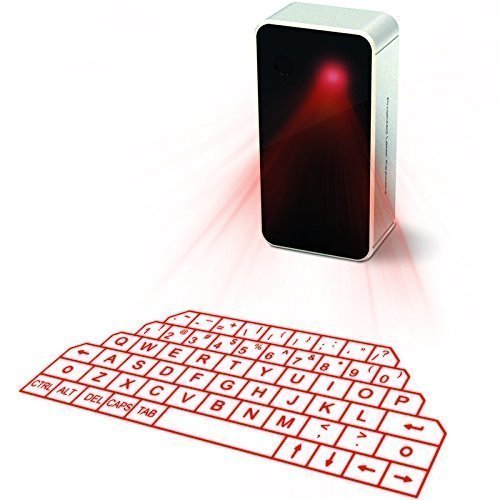
The virtual laser projection keyboard has been upgraded to provide a more stable and smarter typing experience for buyers. To enhance the user's experience, the mini USB port has been changed to a micro USB port. This keyboard is now more convenient for buyers to use.
With a longer working time, the keyboard's battery has been upgraded from 600 mAh to 1000 mAh. This battery works for a longer time, so buyers don't have to worry about it running out of charge quickly.
The keyboard is multifunctional and has been equipped with mini Bluetooth speakers. These speakers support voice reporting and music playing, making this keyboard more versatile and useful for buyers. To ensure the safety of buyers, we use original LG rechargeable batteries, which is the safest rechargeable battery available in the market.
- More stable and smarter typing experience
- Convenient to use with micro USB port
- Longer working time with 1000 mAh battery
- Multifunctional with mini Bluetooth speakers
- Original LG rechargeable battery ensures safety
2. Titan Black Oneplus 11: The Ultimate Smartphone

The OnePlus 11 5G comes with an exciting offer of free 6-month subscriptions of Google One and YouTube Premium for new accounts. The device is powered by the latest and most advanced Qualcomm Snapdragon 8 Gen 2 chipset for Android devices. With increased CPU and GPU performance and integrated AI processes, the OnePlus 11 5G delivers exceptional multitasking abilities and improved background app usage.
The OnePlus 11 5G boasts of a triple camera system co-developed with Hasselblad, a renowned camera brand. It consists of a primary 50MP sensor, a 48MP Ultra-Wide sensor, and 32MP Tele Sensor. The Hasselblad integration offers a range of photographic possibilities, including OnePlus Billion Color Solution, Natural Color Calibration by Hasselblad, & Hasselblad Portraits, making photography an immersive experience.
The OnePlus 11 5G offers an unparalleled viewing experience with its stunning 6.7” 120Hz fluid AMOLED display, featuring 3rd-gen LTPO technology & AOD. The device is now Dolby Vision compatible, offering a more cinematic viewing experience. Coupled with added Dolby Atmos audio, the OnePlus 11 5G is an entertainment powerhouse.
The OnePlus 11 5G comes with an 80W SUPERVOOC charger straight out of the box, ensuring fast charging and improved battery health. The device also features active cooling to prevent overheating and increase battery longevity.
The OnePlus 11 5G comes in two unique colors, Green and Black. It has a bold and elegant circular camera module designed to stand out with its chrome accents and curved glass. The device supports 2 physical SIMs or 1 e-SIM and 1 physical SIM at the same time, making it a versatile option for users.
- Advanced Snapdragon 8 Gen 2 chipset for exceptional performance
- Triple camera system co-developed with Hasselblad for an immersive photographic experience
- Stunning 6.7” 120Hz fluid AMOLED display with Dolby Vision compatibility and Dolby Atmos audio
- 80W SUPERVOOC charger for fast charging and improved battery health with active cooling
- Dual-SIM support for added convenience
3. Magic Keyboard Compatible Tablet Sleeve With Accessory Pocket
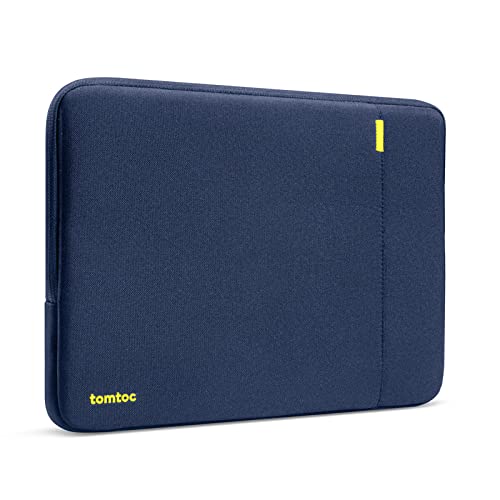
The tomtoc laptop sleeve provides military-grade protection to safeguard your device against falls, shocks, and vibrations. To ensure 360-degree protection, this sleeve is built with CornerArmor Technology, high-resilience edges, and high-density soft padding. The sleeve has passed the Military-Standard-Drop-Test and has a sleek, modern design.
This laptop sleeve is made with premium spill-resistant recycled fabrics, sophisticated interline-designed soft lining, and YKK zippers. The craftsmanship and quality meet the highest standards for a MacBook sleeve. The company follows a human-centered design philosophy and uses recycled fabrics to reduce waste and protect the environment.
The extra front pocket of the sleeve provides convenient storage for your charger, cables, mouse, external backup drive, and other accessories. The sleeve also features an additional strap for your Airtag or key. tomtoc is well-known for providing incredible protection, outstanding quality, and perfect compatibility. This sleeve has received numerous positive reviews and commendations and was appraised as the best cases for your iPad Pro 2022(M2) by iMore.
The tomtoc laptop sleeve comes with a 12-month worry-free warranty and friendly, timely customer support. It is perfectly compatible with 12.9-inch iPad Pro M2&M1 2022-2018 with Magic Keyboard or Smart Keyboard Folio. The sleeve's internal dimensions are 11.18" x 9.06" x 0.67".
- Military-grade protection to safeguard your device against falls, shocks, and vibrations
- 360-degree protection with CornerArmor Technology, high-resilience edges, and high-density soft padding
- Premium spill-resistant recycled fabrics, sophisticated interline-designed soft lining, and YKK zippers
- Human-centered design philosophy and use of recycled fabrics to protect the environment
- Extra front pocket and additional strap for convenient storage of accessories
- 12-month worry-free warranty and friendly, timely customer support
4. Samsung Galaxy S7 Edge Unlocked Smartphone, 32 Gb Silver (Us Warranty – Model Sm-G935uzsaxaa)
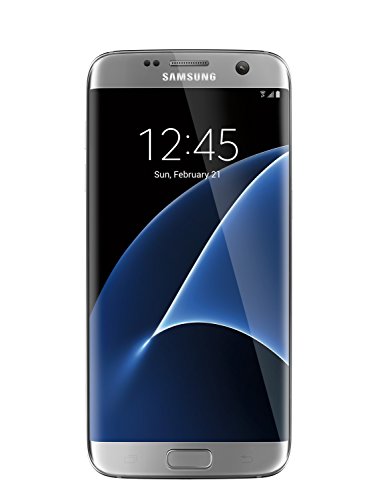
The Samsung Galaxy S7 edge is a top-tier smartphone that offers a range of features to enhance user experience. With a simple swipe, users can access their friends, news, and real-time scores with ease. The phone has an IP68 rating, which means it is water-resistant and can withstand exposure to water without causing damage. The dual-pixel technology camera features fast autofocus, giving users the ability to take stunning photos day and night. The phone can charge up from 0 to 100% quickly, thanks to its fast wireless charging feature. Users can expand their memory up to an additional 200GB with a microSD card. The phone is compatible with GSM networks such as AT&T and T-Mobile, as well as CDMA networks such as Verizon, Sprint, and US Cellular. Some features may vary by wireless service provider, such as vowifi and hotspot support.
- Water-resistant with an IP68 rating
- Dual-pixel technology camera for fast autofocus and high-quality photos
- Fast wireless charging for quick charging times
- Expandable memory up to an additional 200GB with a microSD card
- Compatible with a range of wireless service providers
5. Galaxy Tab S7+: The Ultimate Android Tablet.
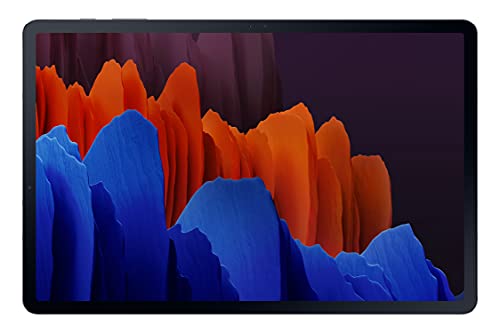
The Samsung Galaxy Tab S7 FE is a versatile device that combines the performance of a PC with the portability of a tablet. With DeX mode and an optional keyboard (sold separately), users can easily transform their tablet into a PC experience. The redesigned S Pen has an improved 9ms pen latency which allows users to control presentations and take notes effortlessly. The device also boasts a larger edge-to-edge display with a TFT LCD screen and AKG quad speakers with Dolby Atmos surround sound, providing an immersive cinematic viewing experience. The USB-C port allows for fast charging that lasts for hours on a single charge. With One UI 3.1, users can copy text or images from their phone and paste them on their tablet and vice versa. The device brings console gaming to anywhere a Wi-Fi connection is available with an immersive screen and Bluetooth-enabled controller. The fingerprint scanner, which is located in the in-display or side-mounted scanner, is the most secure way to keep your device safe and secure, providing quick and easy access to your device.
The Samsung Galaxy Tab S7 FE is a reliable and versatile device that combines the performance of a PC with the convenience of a tablet. With its redesigned S Pen, users can control presentations and take notes with ease. The larger edge-to-edge display with a TFT LCD screen and AKG quad speakers with Dolby Atmos surround sound provides an immersive cinematic viewing experience. The device charges quickly and lasts for hours on a single charge. With One UI 3.1, it's easy to copy and paste text or images from your phone to your tablet and vice versa. The device also brings console gaming to anywhere with a Wi-Fi connection. The fingerprint scanner is a secure way to keep your device safe and secure, providing quick and easy access.
The Samsung Galaxy Tab S7 FE is a powerful device that combines the performance of a PC with the convenience of a tablet. With DeX mode and an optional keyboard (sold separately), users can easily transform their tablet into a PC experience. The redesigned S Pen has an improved 9ms pen latency, making it easy to control presentations and take notes. The device has a larger edge-to-edge display with a TFT LCD screen and AKG quad speakers with Dolby Atmos surround sound, providing an immersive cinematic viewing experience. The device charges quickly and lasts for hours on a single charge. With One UI 3.1, it's easy to copy and paste text or images from your phone to your tablet and vice versa. The device also brings console gaming to anywhere with a Wi-Fi connection. The fingerprint scanner is a secure way to keep your device safe and secure, providing quick and easy access.
- Improved S Pen latency for better control and ease of use.
- Large edge-to-edge display with AKG quad speakers and Dolby Atmos surround sound provide an immersive cinematic viewing experience.
- Fast charging USB-C port that allows for hours of use on a single charge.
- One UI 3.1 allows for easy copying and pasting of text or images between phone and tablet.
- Fingerprint scanner provides quick and easy access to device.
- – The optional keyboard is sold separately.
6. Samsung Tab Keyboard Case: Slim & Sturdy
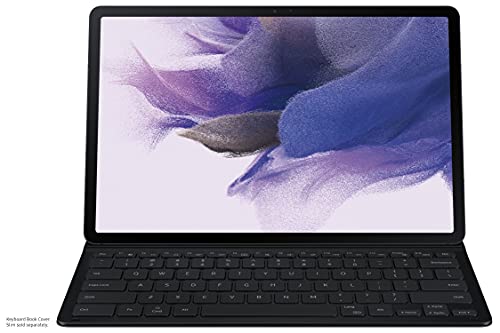
The Protective Cover with a built-in Keyboard is the ultimate solution for anyone who wants to get the most out of their tablet. This innovative cover provides all-around protection for your device while also doubling as a keyboard, allowing you to do more in a snap. You can easily type on your tablet like you would on a PC, wherever you go. The cover has a slim yet sturdy design that is durable but ultra-lightweight, making it easy to carry around with you on the go. The keyboard's large key sizes make for confident keystrokes, ensuring that you can type quickly and accurately. With this protective cover, you can take your tablet with you everywhere you go and use it like a laptop.
The Protective Cover with a built-in Keyboard is perfect for students, professionals, and anyone who wants to get the most out of their tablet. It is easy to use and provides all-around protection for your device. The keyboard is also easy to type on and has large key sizes, making it perfect for fast and accurate typing. With this cover, you can use your tablet like a laptop wherever you go, making it perfect for on-the-go work or entertainment.
- Provides all-around protection for your tablet
- Doubles as a keyboard, allowing you to do more in a snap
- Slim yet sturdy design is durable but ultra-lightweight
- Large key sizes make for confident keystrokes
7. Galaxy Keyboard Case – Sleek And Smart!
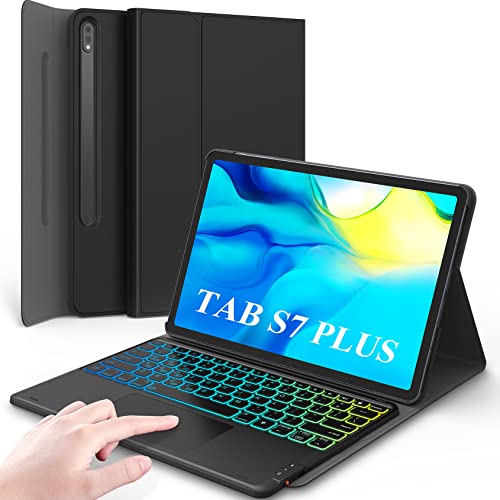
Enhance your typing experience with the 3-Zone 7 Color Backlit Keyboard designed for your Galaxy Tablet. This keyboard offers 7 solid-color backlight options with 3 brightness adjustment modes. You can customize the 3 areas of the keyboard to your preferred color, allowing you to enjoy a unique visual experience. Additionally, the backlight feature makes it easy to operate the keyboard even in dimly lit environments.
Navigate your Tablet with ease using the Multi-Touch Trackpad that accurately controls and navigates, making it possible to edit documents, browse the web, and build presentations at unparalleled speed. This feature offers a combination of tablet and computer functions, allowing you to enjoy an excellent notebook experience. With multi-gesture control, even the most complex workflows become easier.
The keyboard supports 2 devices simultaneously, thanks to the dual Bluetooth channels. You can connect both your Tab A8 and smartphone and switch between them by pressing FN+Q/W, allowing you to work steadily without interruptions.
The PU leather case with keyboard is compatible with three systems: android, ios, and windows. The keyboard retains the proper key pitch and keystroke feeling, making it easy to type even on the small keyboard. The case has three different horizontal bracket angle grooves, providing easy adjustment to the most suitable angle for reading, working, or watching videos.
With a more general type-c interface, the keyboard only takes 2-3 hours to charge, and can work continuously for up to 5 hours with backlight and 50 hours without backlight. Additionally, the keyboard features an automatic sleep function that saves battery power by entering sleep mode when not in use. You only need to press any key to reconnect.
The keyboard case features precise cutouts that allow full access to all features while offering perfect protection. The unique slot for the use of S Pen provides an excellent magnetic attraction on the side of the Tab S8 Plus S7 plus, and the case is made of soft PU that is drop-proof, scratch-resistant, and not slippery, making it perfect all-around protection for your precious tablet.
- Customizable 3-Zone 7 Color Backlit Keyboard to enhance your typing experience
- Multi-Touch Trackpad for easy navigation and control of your Tablet
- Dual Bluetooth channels support 2 devices at the same time
- PU leather case with keyboard compatible with three systems: android, ios, and windows
- More general type-c interface for quick charging and extended battery life
- Precise cutouts for full access to all features while offering perfect protection
- – Some users may prefer a larger keyboard size
8. Hazel Pixel Pro – 5g Unlocked Smartphone
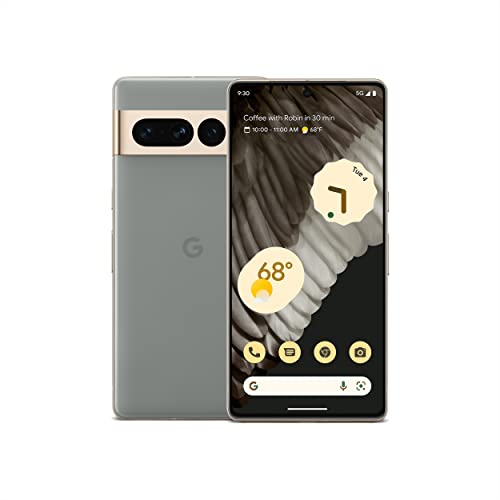
The Google Pixel 7 Pro is a top-of-the-line smartphone that boasts impressive features and advanced technology. Powered by Google Tensor G2, this device delivers faster and more efficient performance, making it one of the best Android phones in the market today. With its 5G compatibility, users can easily switch carriers and select their preferred data plan.
The phone's Adaptive Battery can last for over 24 hours and up to 72 hours with the Extreme Battery Saver feature. Its 6.7-inch Smooth Display with up to 120Hz refresh rate provides an immersive viewing experience. The camera system includes a 5x telephoto lens with 30x Super Res Zoom and an upgraded ultrawide lens that powers Macro Focus to capture the smallest details. The phone is built with multiple layers of security, including the Titan M2 security chip and VPN by Google One (coming soon), to keep your personal info safe.
The Google Pixel 7 Pro also offers hands-free help with Google Assistant, easy device pairing, and the Find My Device feature to locate your Pixel phone, Google Pixel Watch, or Pixel Buds. With its durable design and IP68 protection, this phone can handle water and dust. Its Corning[R] Gorilla[R] Glass Victus[TM] technology makes it scratch-resistant, ensuring that it remains in pristine condition for a long time.
Overall, the Google Pixel 7 Pro is an excellent smartphone that offers advanced features, impressive camera technology, and enhanced security features. It is a must-have for those who want the best Android phone experience.
- Advanced technology and impressive features
- 5G compatibility with the flexibility to change carriers
- Adaptive Battery that lasts up to 72 hours with Extreme Battery Saver
- 6.7-inch Smooth Display with up to 120Hz refresh rate
- Impressive camera system with 5x telephoto lens and 30x Super Res Zoom
- Built with multiple layers of security, including the Titan M2 security chip and VPN by Google One (coming soon)
- Hands-free help with Google Assistant and easy device pairing
- Durable design with IP68 protection and scratch-resistant Corning[R] Gorilla[R] Glass Victus[TM]
9. Fosmon Bluetooth Keyboard With Touchpad And Compatibility.
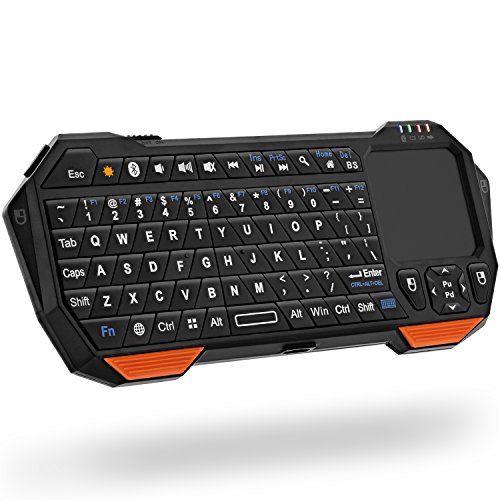
Experience the ultimate freedom of wireless connectivity with this innovative and compact QWERTY keyboard with touchpad, perfect for all your browsing, searching, streaming, and gaming needs. Featuring an ergonomic design that provides comfort and convenience, this keyboard is designed to fit right in the palm of your hand.
One of the best things about this wireless keyboard is its Bluetooth compatibility, which allows it to connect to a multitude of devices such as Apple TV, Amazon Fire Stick, Google TV, Playstation PS4, HTPC/IPTVVR Glasses (Virtual Reality Headset Box), smartphones (iOS/Android/Windows), notebooks, laptops (Windows/Mac OS X v10.7 Lion and above) and more. In addition, the working range of approximately 33ft/10m ensures that you can easily connect and control all your Bluetooth devices with this wireless keyboard.
This keyboard also features a long-lasting rechargeable lithium-ion battery that provides up to 10 days of continuous working time and up to 50 days of standby time. The LED indicators notify when the battery is low and when it is fully charged. Charging via the included USB cable is simple and easy.
The keyboard is also equipped with a convenient backlit feature that makes typing in the dark a breeze. So whether you're working late at night or simply prefer to use your devices in a dimly lit environment, this keyboard has got you covered.
Please note that while this keyboard is compatible with most smart TVs, we cannot guarantee compatibility with all models. We recommend checking the Bluetooth capability of your TV before making a purchase.
In summary, this compact and portable QWERTY keyboard with touchpad is an excellent choice for anyone looking for a versatile and convenient wireless keyboard that is perfect for all their browsing, searching, streaming, and gaming needs. With its Bluetooth compatibility, long-lasting rechargeable battery, and convenient backlit feature, this keyboard is a must-have for anyone who values both comfort and convenience.
- Bluetooth compatibility allows it to connect to a multitude of devices
- Long-lasting rechargeable lithium-ion battery
- Convenient backlit feature for typing in the dark
- Compact and portable design
- Innovative touchpad for easy navigation
- – Compatibility with all smart TVs cannot be guaranteed
10. Samsung Galaxy S7 G930a 32gb At&t Unlocked Gsm – Gold
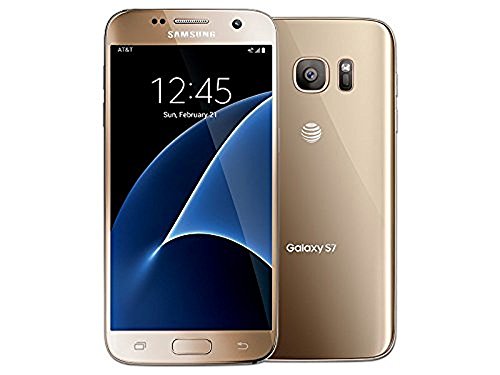
The device boasts a 4 GB RAM and 32 GB internal memory that is expandable up to 256 GB through a dedicated microSD slot. The non-removable Li-Ion 3000 mAh battery ensures long hours of uninterrupted usage. The device runs on Android OS v6.0 (Marshmallow) and is powered by a Qualcomm MSM8996 Snapdragon 820 chipset. The CPU comprises of a Dual Core 2.15 GHz Kryo and Dual Core 1.6 GHz Kryo, while the GPU is Adreno 530.
Looking for a smartphone that offers seamless multitasking and ample storage? Look no further than this device with its impressive 4 GB RAM and 32 GB internal memory. With a dedicated microSD slot that supports expansion up to 256 GB, you can store all your favorite media files without worrying about running out of space. The non-removable Li-Ion 3000 mAh battery ensures that you stay connected all day long. Powered by a Qualcomm MSM8996 Snapdragon 820 chipset, this device offers speedy performance and runs on Android OS v6.0 (Marshmallow). Its CPU comprises of a Dual Core 2.15 GHz Kryo and Dual Core 1.6 GHz Kryo, while the Adreno 530 GPU ensures smooth graphics and video playback.
- Large 4 GB RAM ensures smooth multitasking
- 32 GB internal memory offers ample storage space
- Dedicated microSD slot supports expansion up to 256 GB
- Non-removable Li-Ion 3000 mAh battery offers long hours of usage
- Qualcomm MSM8996 Snapdragon 820 chipset ensures speedy performance
- Adreno 530 GPU ensures smooth graphics and video playback
Best Keyboard For S7 Edge FAQs
Are there any keyboard cases available for the Samsung Galaxy S7 Edge?
Yes, there are several keyboard cases available for the Samsung Galaxy S7 Edge. Keyboard cases are a popular accessory for those who need to type a lot on their phones. These cases come with a built-in keyboard that connects to the phone via Bluetooth, allowing for easy typing on the go. Some popular options for keyboard cases for the Samsung Galaxy S7 Edge include the Samsung Keyboard Cover, the Fintie Keyboard Case, and the IVSO Keyboard Case. These cases not only provide a convenient typing experience but also offer protection to the phone from scratches, bumps, and drops. However, it is important to note that using a keyboard case may add bulk to the phone, making it less portable. Additionally, the keyboard may take some time to get used to, especially if you are used to typing on a regular keyboard. Overall, if you are someone who needs to type a lot on your phone, a keyboard case can be a handy accessory to consider.
Can I use a Bluetooth keyboard with my Samsung Galaxy S7 Edge?
Yes, you can definitely use a Bluetooth keyboard with your Samsung Galaxy S7 Edge. In fact, it is a great way to enhance your productivity and make typing on your phone much easier and faster. All you need to do is pair your Bluetooth keyboard with your phone through the Bluetooth settings. Once paired, you can use the keyboard to type out emails, messages, notes, and other documents on your phone.
Bluetooth keyboards come in different sizes and styles, so you can choose one that suits your needs and preferences. Some are full-sized keyboards, while others are more compact and portable. You can also find keyboards with built-in trackpads or touchpads for added convenience.
Using a Bluetooth keyboard with your Samsung Galaxy S7 Edge is a simple and efficient way to improve your typing experience on your phone. Whether you are working on the go or just want to type more comfortably, a Bluetooth keyboard is a great accessory to have.
How do I customize the keyboard settings on my Samsung Galaxy S7 Edge?
To customize the keyboard settings on your Samsung Galaxy S7 Edge, you need to follow the steps below:
1. Go to the "Settings" app on your device.
2. Scroll down and tap on "General management."
3. Tap on "Language and input."
4. Tap on "Virtual keyboard."
5. Select the keyboard you want to customize. In this case, it would be the "Samsung keyboard."
6. Here, you can customize various settings such as keyboard layout, auto-correction, predictive text, and more.
7. Once you have made the desired changes, you can exit the settings menu.
It is important to note that the steps may vary slightly depending on the version of Android you are running on your device. However, the general process remains the same. Customizing your keyboard settings can help improve your typing experience and make it more efficient.
Is it possible to change the keyboard language on my Samsung Galaxy S7 Edge?
Yes, it is possible to change the keyboard language on your Samsung Galaxy S7 Edge. This feature allows you to type in different languages, which is particularly useful if you are multilingual or if you need to communicate with someone who speaks a different language.
To change the keyboard language on your Samsung Galaxy S7 Edge, follow these steps:
1. Go to the Settings app on your device.
2. Scroll down and select "Language and Input."
3. Tap "Virtual Keyboard."
4. Select "Samsung Keyboard."
5. Tap "Languages and Types."
6. Select the language you want to use.
Once you have selected the language you want to use, you can start typing in that language. The Samsung keyboard will automatically recognize the language you are typing in and offer suggestions and corrections based on that language.
In conclusion, changing the keyboard language on your Samsung Galaxy S7 Edge is a simple process that can greatly enhance your device's functionality. Whether you need to communicate in a different language or simply want to expand your language skills, this feature can be a valuable tool for any user.
What are the best keyboard options for the Samsung Galaxy S7 Edge?
When it comes to selecting the best keyboard options for your Samsung Galaxy S7 Edge, there are several factors to consider. Firstly, you should consider the features that you are looking for in a keyboard. Do you want a keyboard that is easy to use, has predictive text, or offers customization options? Secondly, you should consider the type of keyboard that you prefer. Do you prefer a traditional QWERTY keyboard, or would you prefer a swipe keyboard?
Some of the best keyboard options for the Samsung Galaxy S7 Edge include the SwiftKey keyboard, which is known for its advanced predictive text features and customization options. Another popular option is the Gboard keyboard, which offers a simple and easy-to-use interface, as well as a range of customization options. Additionally, the Fleksy keyboard is known for its speed and accuracy, and offers a range of customization options to suit your preferences.
Ultimately, the best keyboard option for your Samsung Galaxy S7 Edge will depend on your personal preferences and needs. It is important to explore different options and try out different keyboards to find the one that works best for you.

